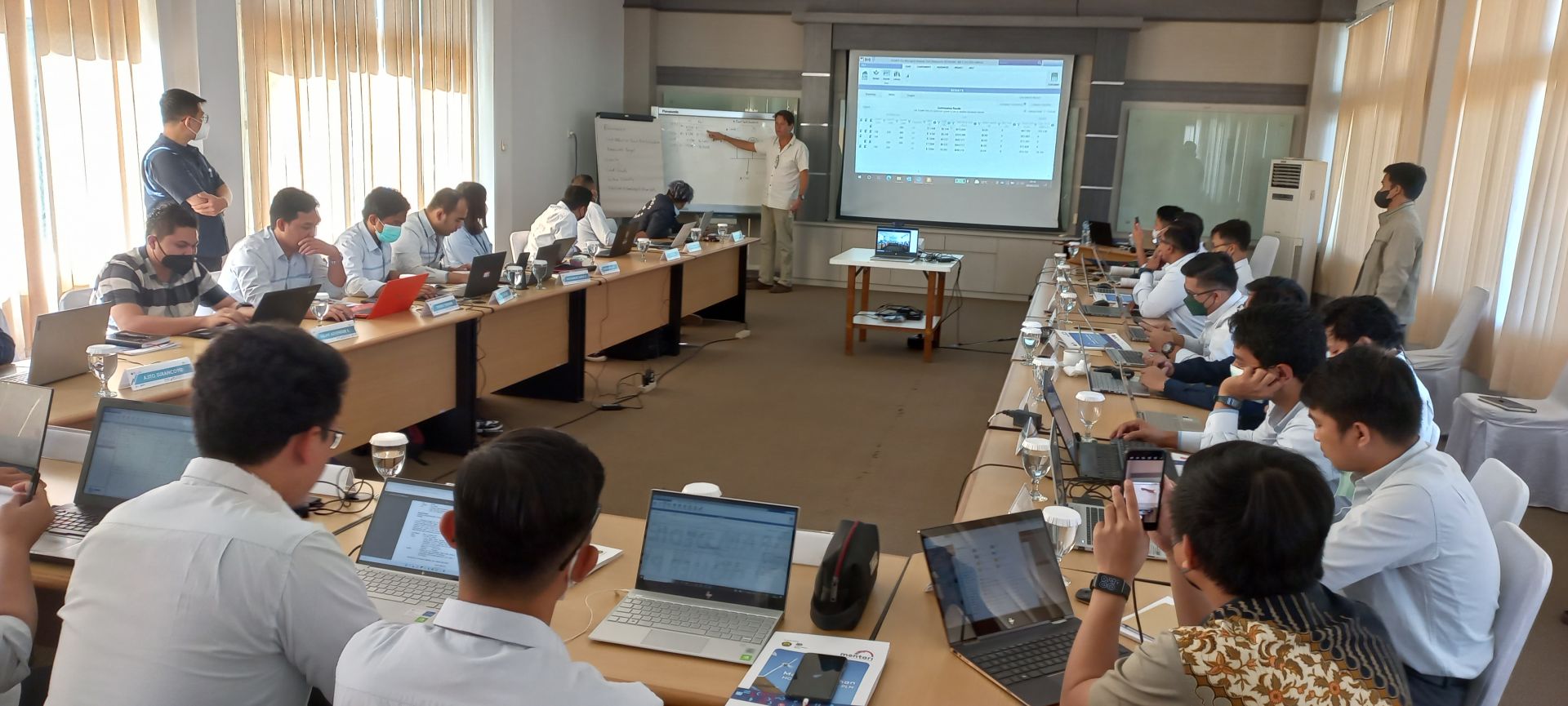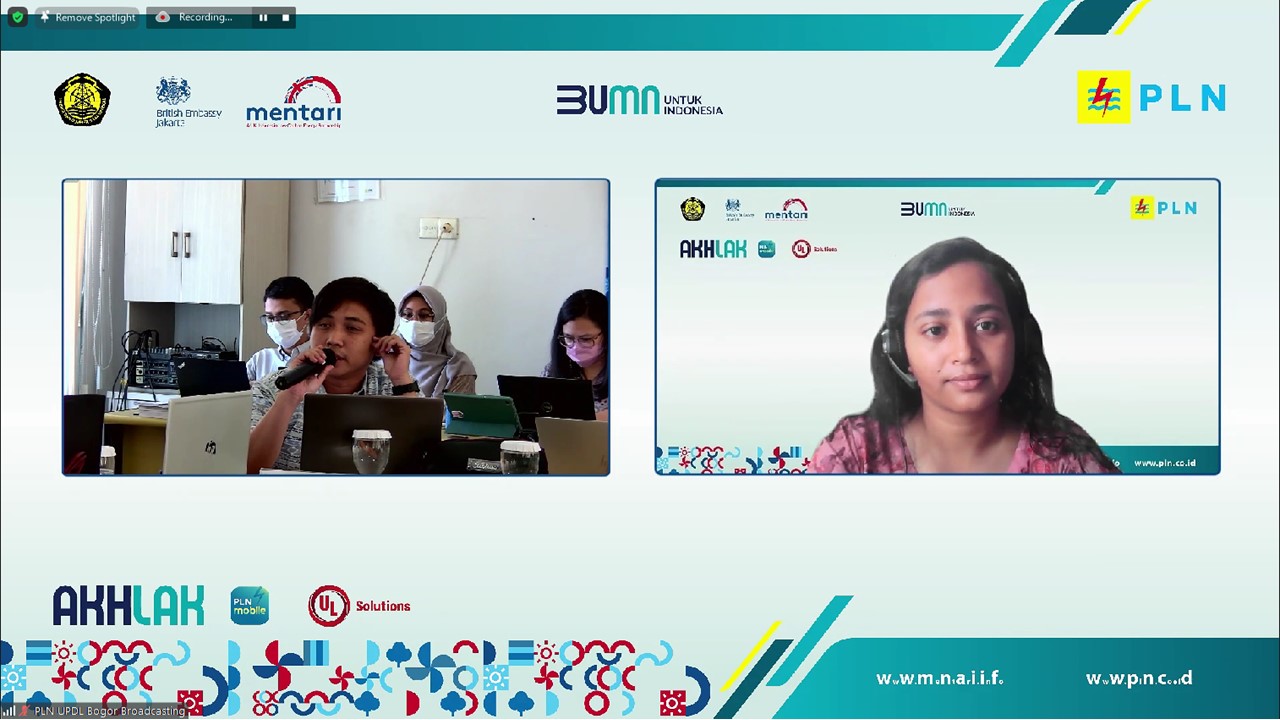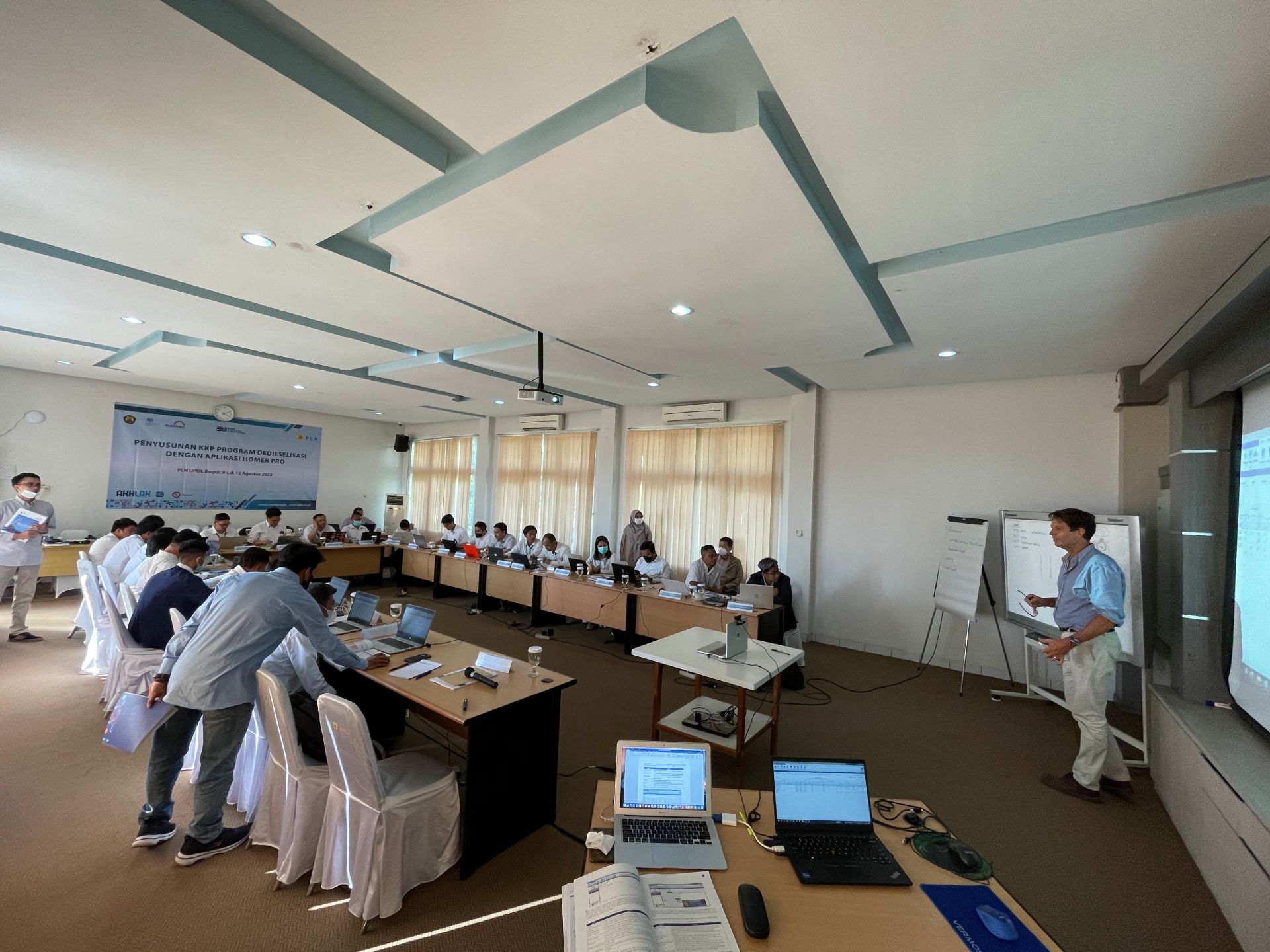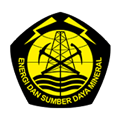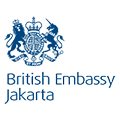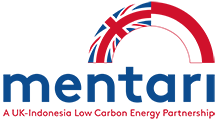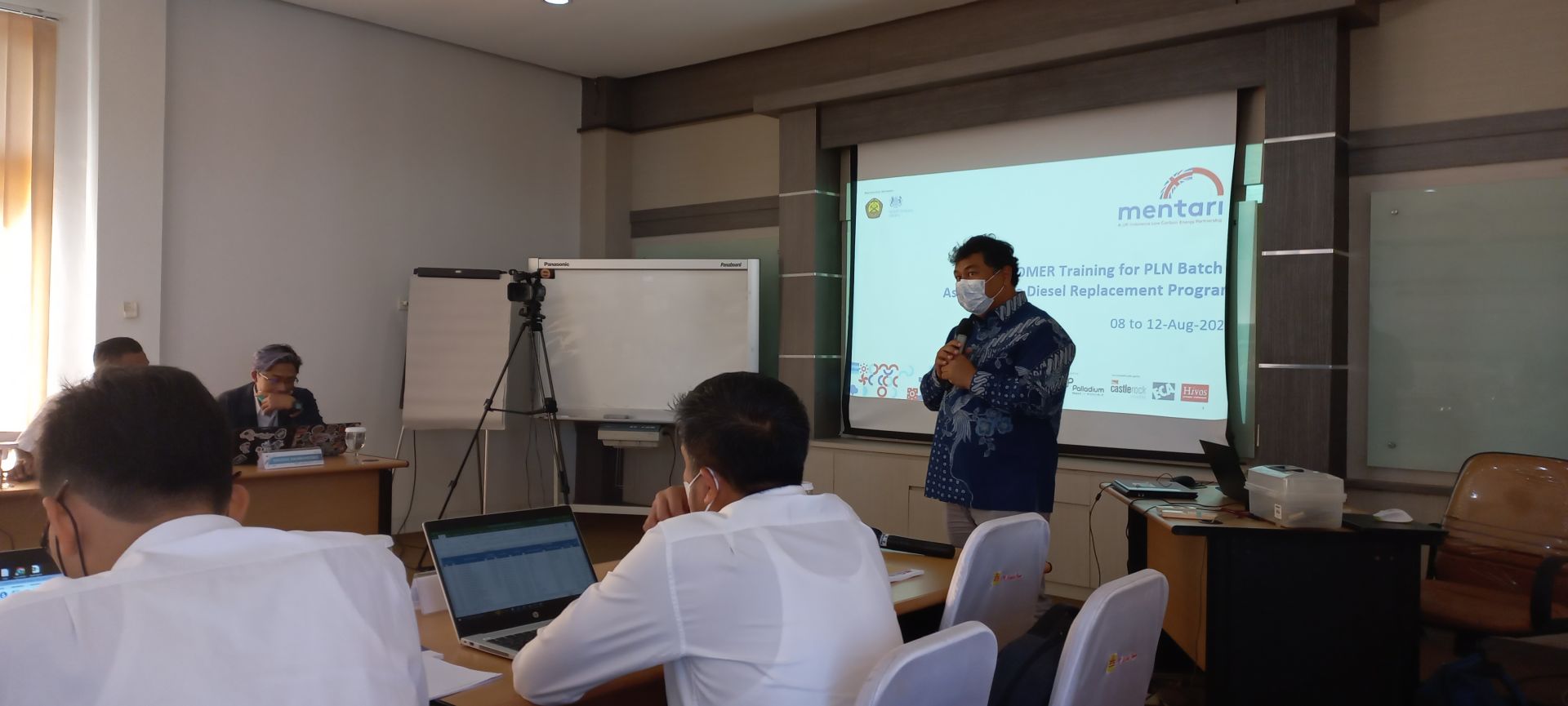By: Policy Strand MENTARI
PLN’s Diesel Replacement Program was publicly launched in March 2022, with the ambition to convert 499 MW of diesel to new renewable energy in two batches. The first batch covers 183 locations with a total 212 MW of existing diesel generator set capacity (to be hybridised with solar PV and battery system), while the second batch will cover 287 MW of existing diesel generator set capacity (to be hybridised with various local renewable resources). To execute this program, PLN requires to conduct technical and financial feasibility studies. In doing so, UK-Indonesia MENTARI Programme offers a full package of assistance to PLN with training to improve existing technical feasibility study.
In August-September 2022, a series of training for off-grid/small-scale hybrid optimization was held by UK-Indonesia MENTARI Programme in collaboration with PLN New Renewable Energy Division, PLN Pusdiklat (Training and Education Centre) and fully supported by UL Solution (HOMER’s developer) and New Zealand MATES Programme. The hybrid optimization will be built through commercial software, HOMER Pro. The HOMER Pro is one of the optimization software with sufficient capability to explore the optimal design with the least cost possible option and viable technical operation, in off-grid or small-scale level. The training will be in two batches for PLN, and one for MEMR. The first batch is intended for PLN Eastern Indonesia regional offices, while the second batch is intended for PLN Western Indonesia regional offices. Through the collaboration, the training was led by the trainers from MENTARI and UL Solutions, with assistants from MENTARI and NZ MATES. This first batch is held in Pusdiklat Bogor on August 8-12, 2022.
The training was attended by 25 trainees across regional/local PLN officials from Eastern Indonesia, PLN New Renewable Energy Division, PLN Engineering, and PLN Planning Division. Taking a sample from a real case, the practice of the field in regional experiences meets the more robust modelling for off-grid development. Hands-on modelling from basics/fundamentals, data input, and simple hybrid model to a complex hybrid model. Each trainee explores the tool for their in-depth understanding and runs a trial of each regional case. In addition to that, UL Solutions and NZ MATES shared their experiences on various utilizations of HOMER Pro and the practices in Maluku, respectively.
A lively discussion about generator set arrangement, resource data references, warning of stability, the gap between real practice to the modelling, unmet energy and dispatch, economic optimization, and each technology discussion (ranging from a diesel generator, solar PV, battery, wind, and micro hydro). Trainees were grouped and presented the results of their understanding of load profile input, technical data and resource data, financial data, and cost breakdown. The groups were challenged to solve the complex model of HOMER Pro with a technology combination of wind, micro hydro, solar PV, diesel generator set, and battery. The constraints were given such as renewable energy fraction of 30%, operating services for wind and PV each 10%, capacity shortage of 2 USD per kWh, and CO2 penalty of 2 USD per tonnes.
At the end of the training, the modelling and training process was evaluated by all trainees. The inputs and feedback built the improvement for upcoming training.
